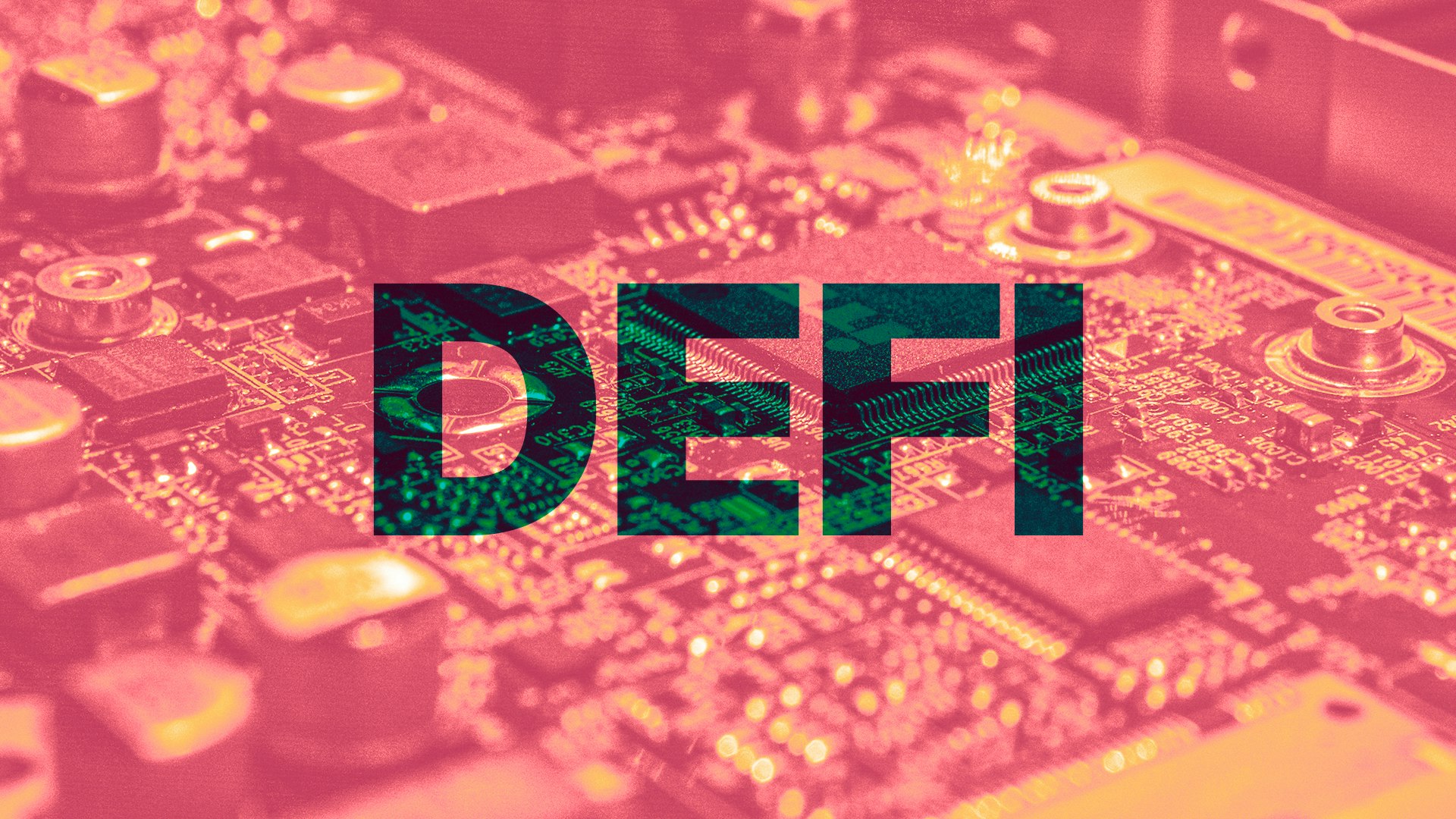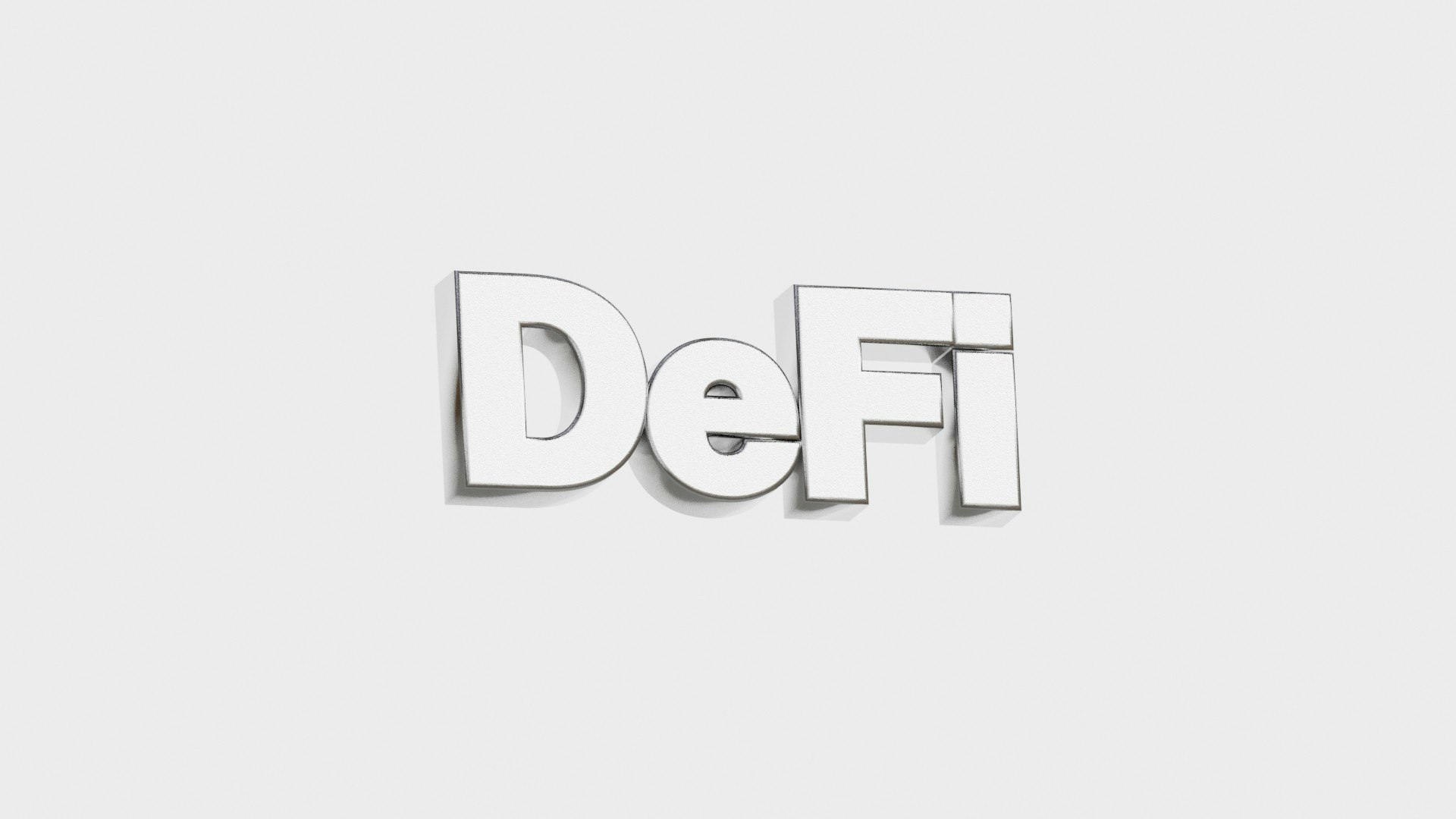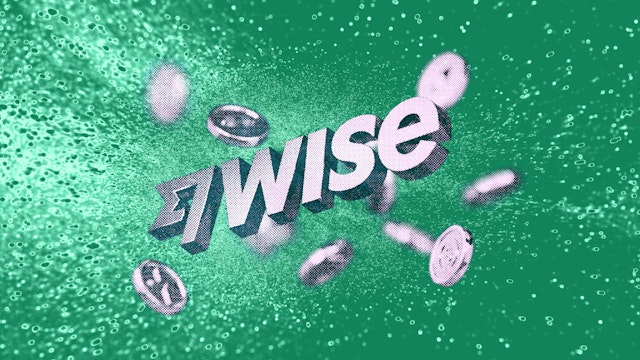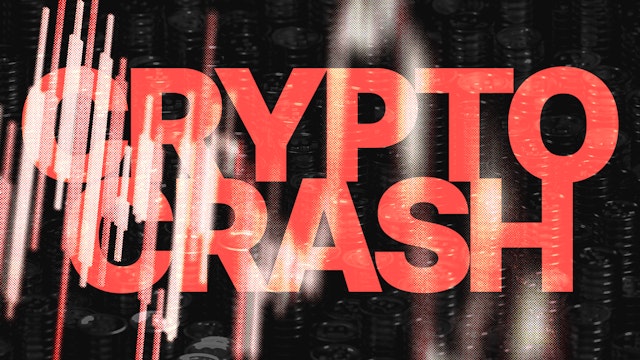What is DeFi? Decentralised Finance Explained
What is DeFi? Cryptocurrency has given rise to a new concept known as decentralised finance or DeFi. Here is the breakdown.
In this article...
- Decentralised finance, or DeFi, refers to financial services that are built on top of blockchain networks
- They are run without the use of middlemen like banks or other financial institutions
- Instead of lending from a bank, people can lend via a DeFi platform, among other other services.

What is DeFi? Cryptocurrency has given rise to a new concept known as decentralised finance or DeFi. Here is the breakdown.
What is DeFi?
Decentralised finance, or DeFi, refers to financial services that are built on top of blockchain networks and run without the use of middlemen like banks or other financial institutions.
It is a financial system that is an alternative to conventional financial services.
Earning interest, borrowing money, lending money and other activities are all possible, but the process is quicker and doesn't involve any formalities or a third party.
More or less, instead of lending from a bank, for example, people can lend via a DeFi platform, among other other services.
It is open to everyone, peer-to-peer (directly between two people, not through a centralised system), global, and pseudonymous.
How does DeFi Differ from traditional finance?
There are several differences from conventional finance.
-DeFi runs on a decentralised system, meaning it is not governed by a centralised institution or authority.
-Regardless of location, wealth, or status, anyone with an internet connection has open access to financial services and products thanks to DeFi.
-DeFi runs on a trustless system, which means that all participants can rely on transactions to be carried out automatically and without the use of middlemen.
What are the advantages of DeFi?
DeFi offers some benefits to its users.
Accessibility
There is no requirement to "open" an account or submit an application. By making a wallet, you can simply gain access.
Transparency
Because DeFi operates on a decentralised system, it is more transparent than traditional financial systems. This is because the system is designed to be tamper-proof and fraud-resistant.
Pseudonymous
You are not required to submit your name, email address, or any other private information.
Flexibility
You have the freedom to move your assets at any time, without needing permission, without having to wait for lengthy transfers to complete, and without having to pay high fees.
Quick
Compared to traditional finance, interest rates and rewards are frequently updated quickly (updated as frequently as every 15 seconds).
What are the disadvantages of DeFi?
DeFi, however, has some drawbacks as well. The absence of regulation is one of DeFi's biggest problems.
There is little oversight or regulation in place to protect users because the system doesn't use conventional financial institutions.
Users should exercise caution when investing in DeFi projects because there is a chance of fraud and scams.
DeFi is also still a new idea, so there is a chance that the technology may not be as secure as supporters assert.
How does DeFi work?
DeFi is an emerging financial technology that challenges the current centralised banking system. It provides free, open-source digital marketplaces that enable users who code to innovate and develop their own decentralised apps (dApps).
The majority of dApps that are currently used to interact with DeFi by users run on the Ethereum blockchain.
To understand how DeFi works, it is important to understand the basics of blockchain and smart contract technology.
Blockchain allows information to be recorded and verified without the need for a central authority. Smart contracts, on the other hand, are self-executing contracts that automatically enforce the terms of an agreement between parties.
DeFi platforms use blockchain and smart contract technology to deliver a range of services, such as payment processing, trade and investment, loans, insurance, and asset management.
Uses of DeFi
People are currently using DeFi in a variety of ways:
-Lending out cryptocurrency and earning interest and rewards
-Getting loans instantly without filling out paperwork
-Trading certain cryptocurrency assets between peers
-Putting some of their cryptocurrency into alternative savings accounts and earning higher interest rates than they would typically get from a bank
-Placing long or short bets on specific assets.
Some DeFi platforms provide extremely short-term "flash loans," which are unavailable from conventional financial institutions.
The key players in the DeFi ecosystem
The DeFi ecosystem is made up of various key players. They allow users to transact, lend, borrow, and invest in cryptocurrencies in a decentralised manner.
Some of the main players in the DeFi ecosystem include Aave and Uniswap.
Aave is a decentralised lending platform that allows users to lend and borrow cryptocurrencies without intermediaries.
Uniswap is a decentralised exchange protocol that allows users to trade cryptocurrencies without intermediaries.
Curve Finance is a blockchain protocol that provides a way to swap stablecoins efficiently, with low fees and slippage, making it a valuable player in the DeFi space.
Role of decentralised exchanges
Decentralised exchanges, or DEXs, are essential to DeFi because they enable peer-to-peer, trustless cryptocurrency trading.
Decentralised exchanges (DEXs) allow users to trade directly with one another using smart contracts. These smart contracts execute trades automatically when certain conditions are met.
This is different to centralised exchanges that require users to deposit their funds with the exchange and rely on the exchange to facilitate trades.
DeFi lending and borrowing
One of the most popular use cases of DeFi is lending and borrowing. DeFi lending and borrowing is a way to lend and borrow cryptocurrencies without the need for traditional financial institutions. These transactions take place on decentralised finance (DeFi) platforms that operate using blockchain technology.
One of the benefits of DeFi lending and borrowing is that it is accessible to anyone with an internet connection, making it more inclusive than traditional financial institutions.
Lenders can earn higher interest rates compared to traditional savings accounts, while borrowers can access capital without the need for collateral or a credit score.
However, there are also risks involved in DeFi lending and borrowing. One of the main risks is smart contract risk, which arises from the possibility of bugs or vulnerabilities in the code that can be exploited by attackers.
The volatility of cryptocurrencies can make it difficult for borrowers to repay their loans, which can lead to default and loss of funds for the lenders.
DeFi lending and borrowing provide several opportunities for both lenders and borrowers, but also come with risks that need to be carefully evaluated. It is important to do thorough research and understand the risks involved before engaging in DeFi lending and borrowing activities.
Staking and yield farming
Staking is the process of holding and locking up a certain amount of cryptocurrency to support the operations of a blockchain network.
In return for holding and securing the network, stakers are rewarded with more cryptocurrency. Essentially, staking allows individuals to earn passive income through their investment in a blockchain network.
On the other hand, yield farming is the practice of using different DeFi protocols to earn rewards on cryptocurrency holdings.
Yield farming involves lending or providing liquidity to DeFi protocols in exchange for a share of the protocol's fees or rewards. This process incentivises individuals to participate in DeFi and helps to support the operations of the network.
Both staking and yield farming are popular ways to earn passive income in the cryptocurrency world.
BUT it is important to understand the risks associated with these practices and to do your own research before investing in any cryptocurrency. It is also crucial to choose a reputable platform or protocol to participate in staking or yield farming.
Security and regulatory concerns in the DeFi space
As these applications are frequently created using open-source code that is susceptible to hacking and other security breaches, security is a major concern in the DeFi space.
DeFi protocols also frequently use smart contracts, which can be exploited if the code is flawed or the audit is not done properly. DeFi protocol users and investors should carefully evaluate the security measures in place before making an investment or conducting business using these protocols.
Because these protocols frequently operate outside of the conventional financial system and regulatory frameworks, regulatory concerns in the DeFi space have also been brought up.
Governments and financial regulatory organisations are debating how to control this new financial structure, especially with regard to problems like fraud and money laundering.
The Future of DeFi: Trends and predictions
More people and institutions are realising the advantages of decentralised finance. It might eventually be used in traditional finance. Different DeFi protocols may be interoperable in the future. And, DeFi systems may incorporate artificial intelligence to increase efficiency and security.
Decentralised finance has enormous potential.
Conclusion: Is DeFi right for you?
Decentralised Finance (DeFi) is an alternative financial ecosystem built on blockchain networks that operate without intermediaries such as banks or other financial institutions. DeFi offers accessibility, transparency, and security, and its system operates on a decentralised and trustless basis.
However, DeFi has some disadvantages, such as the lack of regulation, which increases the risk of fraud and scams, and the potential security issues. Users must be cautious when investing in DeFi projects and conduct thorough research before making any investment.
Glossary
Blockchain: A digital ledger that stores transactions in a secure, decentralised, and immutable manner. It is maintained by a network of computers that work together to validate and record new transactions.
Cryptocurrency: A digital or virtual currency that uses cryptography to secure and verify transactions and to control the creation of new units. Cryptocurrencies operate independently of a central bank and can be transferred directly between individuals.
Decentralised: A system or network that operates without a central authority or control. In a decentralised system, decision-making is distributed among its participants rather than being concentrated in a single entity.
Decentralised exchanges: Platforms that allow users to trade cryptocurrencies without the need for a central authority or intermediary. They operate using smart contracts and are considered more secure and transparent than centralised exchanges.
Ethereum: A decentralised blockchain platform that enables the creation and execution of smart contracts and decentralised applications (dApps). It has its own cryptocurrency, called Ether (ETH), which is used to pay for transactions and services on the Ethereum network.
IPFS and Arweave: IPFS (InterPlanetary File System) and Arweave are decentralised storage networks that allow users to store and retrieve data in a secure and distributed manner. They use a peer-to-peer network of computers to store data and ensure that it is accessible and available.
Ledger: A record of transactions or other data that is maintained and updated by a network of computers. In a blockchain context, a ledger refers to a digital ledger that records and verifies transactions.
Staking: The act of holding and locking up a cryptocurrency to support the operations of a blockchain network. Staking allows users to earn rewards in the form of additional cryptocurrency or other benefits.
Yield farming: A process in which cryptocurrency holders provide liquidity to decentralised exchanges or other platforms in exchange for rewards or incentives. Yield farming allows users to earn interest on their holdings or to participate in governance decisions on the platform.

Frequently asked questions
What is DeFi?
Decentralized finance (DeFi), refers to an emerging financial technology that operates on secure distributed ledgers similar to those used by cryptocurrencies (or digital assets).
The bottom line is that it challenges the traditional centralised financial system by enabling peer-to-peer financial transactions via digital wallets and exchanges, without intermediaries like banks or brokerages.
What components make up DeFi?
DeFi comprises cryptocurrencies, blockchain technology, and software that allow individuals to transact financially with each other. It eliminates the need for centralised institutions and intermediaries.
How does DeFi work?
Through peer-to-peer financial networks, it leverages security protocols, connectivity, software, and hardware advancements. It uses blockchain technology to reduce reliance on intermediaries.
Individuals hold private keys to tokens or cryptocurrencies, securing their ownership. Applications communicate with a blockchain, enabling various financial services like banking, trading, lending, and insurance.
What are decentralized exchanges (DEXs)?
DEXs are platforms within the ecosystem where users can trade crypto assets directly with one another. These exchanges operate on public blockchains, such as Ethereum, and facilitate peer-to-peer trading without centralised control.
Is DeFi secure?
It is still in its infancy and faces security challenges due to sloppy programming and insufficient security testing before application launches. However, the underlying distributed ledger technology provides inherent security features.
What types of financial services can I access through DeFi?
DeFi allows you to earn interest, borrow, lend, buy insurance, trade derivatives, and more — all faster and without paperwork or third parties.

Suggested Articles

Where to Keep Cryptocurrency: How to Store Crypto
Discover the best ways to store your crypto. Learn about software wallets, hardware options, and essential security practices.Read more
You Can Use Wise to Withdraw Fiat From Select Crypto Exchanges
Having a Wise account now means that you can deposit and withdraw fiat from registered crypto exchanges like CoinJar.Read more
Why is Crypto Crashing? Explaining the Crypto Bloodbath
Why is crypto crashing today? Here is the explanation of some of the blow-up.Read moreBrowse by topic
Disclaimer: This article is for informational purposes only and does not constitute financial or investment advice. Cryptocurrencies, including Bitcoin, are highly volatile and speculative assets, and there is always a risk that they could become worthless.
Readers should conduct their own research and consult with a qualified financial advisor before making any investment decisions.
CoinJar does not endorse the content of, and cannot guarantee or verify the safety of any third party websites. Visit these websites at your own risk.
Your information is handled in accordance with CoinJar’s Collection Statement.
CoinJar’s digital currency exchange services are operated by CoinJar Australia Pty Ltd ACN 648 570 807, a registered digital currency exchange provider with AUSTRAC.
CoinJar Card is a prepaid Mastercard issued by EML Payment Solutions Limited ABN 30 131 436 532 AFSL 404131 pursuant to license by Mastercard. CoinJar Australia Pty Ltd is an authorised representative of EML Payment Solutions Limited (AR No 1290193). We recommend you consider the Product Disclosure Statement and Target Market Determination before making any decision to acquire the product. Mastercard and the circles design are registered trademarks of Mastercard International Incorporated.
Google Pay is a trademark of Google LLC. Apple Pay is a trademark of Apple Inc.
This site is protected by reCAPTCHA and the Google Privacy Policy and Terms of Service apply.

